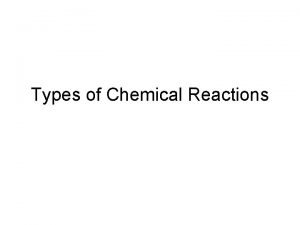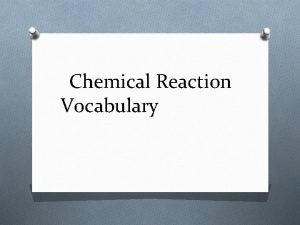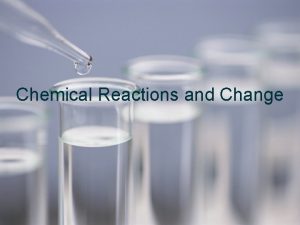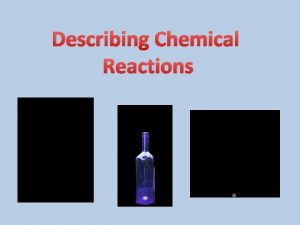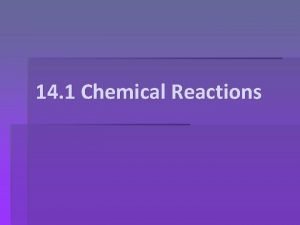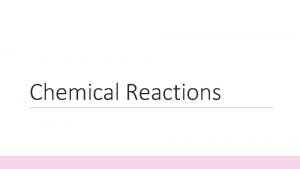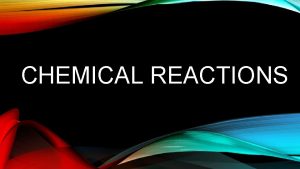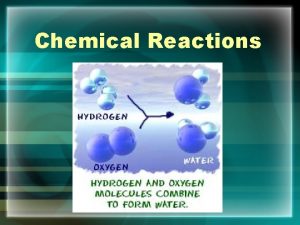CHEMICAL REACTIONS WHAT IS A CHEMICAL REACTION Changes











- Slides: 11

CHEMICAL REACTIONS

WHAT IS A CHEMICAL REACTION? Changes or transforms chemicals into other chemicals Ex: Iron + Oxygen Iron Oxide (rust) Physical Science Review What is the product? What are the reactants?

Chemical formula shows the kind and proportion of atoms of each element that occurs in a particular compound

Molecules are the simplest part of a substance that retains all of the properties of the substance and exists in a free state Some molecules are large and complex

CHEMICAL FORMULAS Subscript after a symbol tell the number of atoms of each element. H 20 has 2 atoms of hydrogen & 1 atom of oxygen.

CHEMICAL FORMULAS Coefficients before a formula tell the number of molecules. 3 O 2 represents 3 molecules of oxygen or (3 x 2) or 6 atoms of oxygen.

The physical and chemical properties of a compound differ from the physical and chemical properties of the individual elements that compose it

Most atoms are not stable in their natural state They tend to react (combine) with other atoms in order to become more stable (undergo chemical reactions) In chemical reactions bonds are broken; atoms rearranged and new chemical bonds are formed that store energy

ENERGY AND CHEMICAL REACTIONS Living things undergo thousands of chemical reactions as part of the life process

Many are very complex involving multistep sequences called biochemical pathways Chemical equations represent chemical reactions Reactants are shown on the left side of the equation Products are shown on the right side

The number of each kind of atom must be the same on either side of the arrow (equation must be balanced) Bonds may be broken or made forming new compounds
 Section 2 reinforcement classifying chemical reactions
Section 2 reinforcement classifying chemical reactions Section 2 reinforcement classifying chemical reactions
Section 2 reinforcement classifying chemical reactions Section 1 chemical changes
Section 1 chemical changes Chemical reactions section 3 reactions in aqueous solutions
Chemical reactions section 3 reactions in aqueous solutions Example of chemical and physical change
Example of chemical and physical change Chapter 18 chemical reactions balancing chemical equations
Chapter 18 chemical reactions balancing chemical equations Difference between nuclear reaction and chemical reaction
Difference between nuclear reaction and chemical reaction Chemistry unit 5 reactions balancing reactions worksheet
Chemistry unit 5 reactions balancing reactions worksheet Examples of redox reaction
Examples of redox reaction Changes in latitudes, changes in attitudes meaning
Changes in latitudes, changes in attitudes meaning What are the five general types of chemical reactions
What are the five general types of chemical reactions Predicting synthesis reactions
Predicting synthesis reactions










